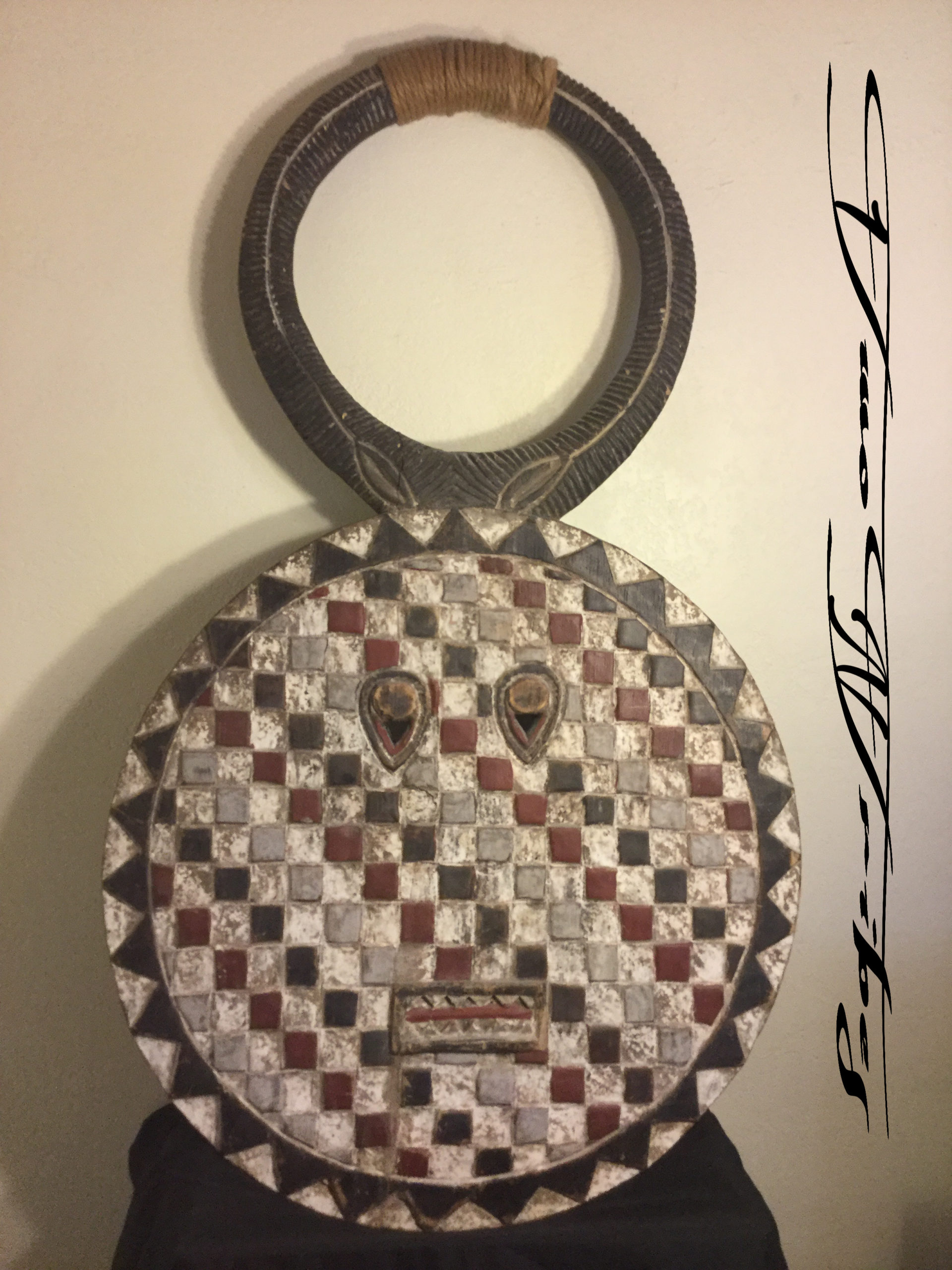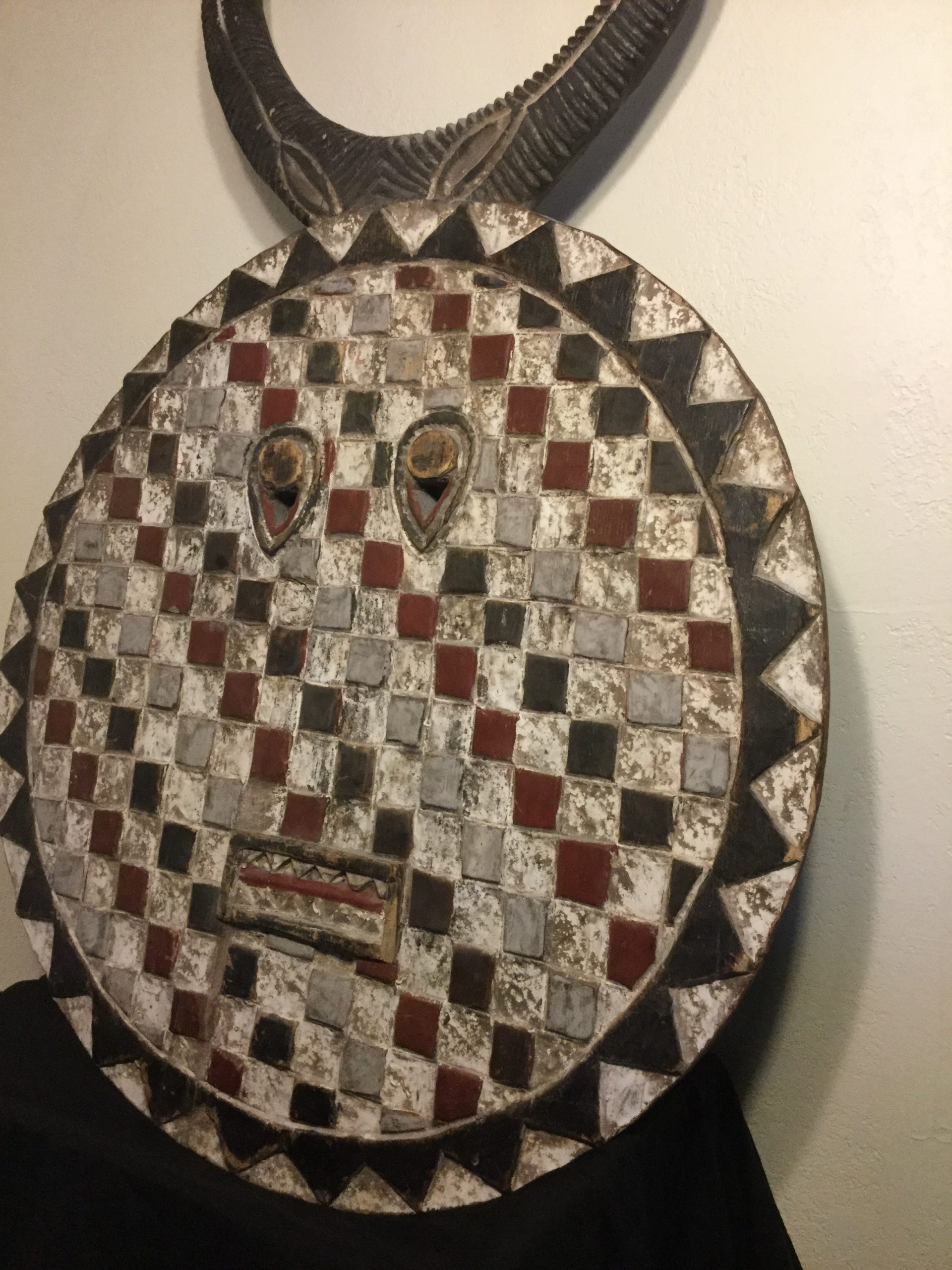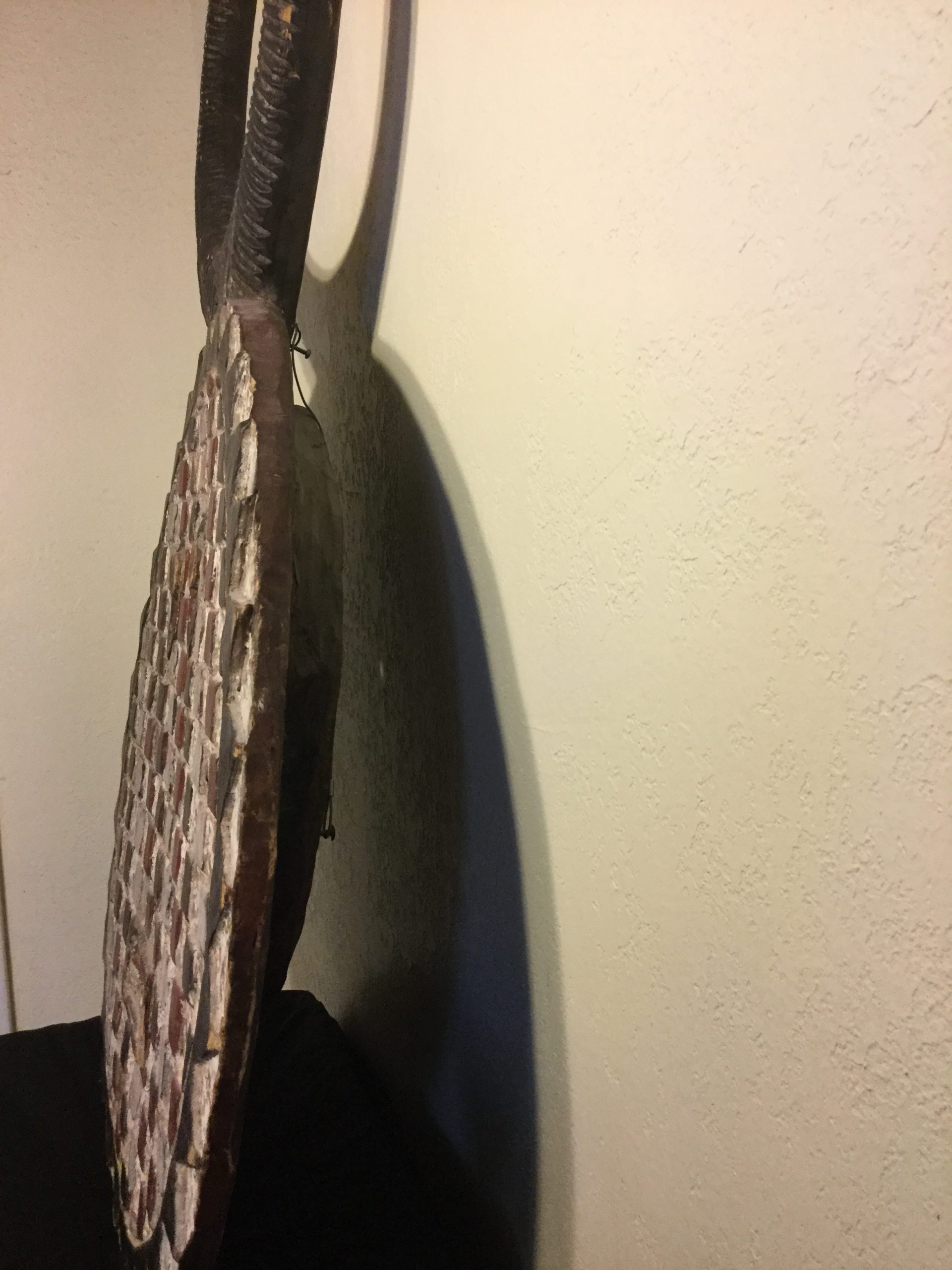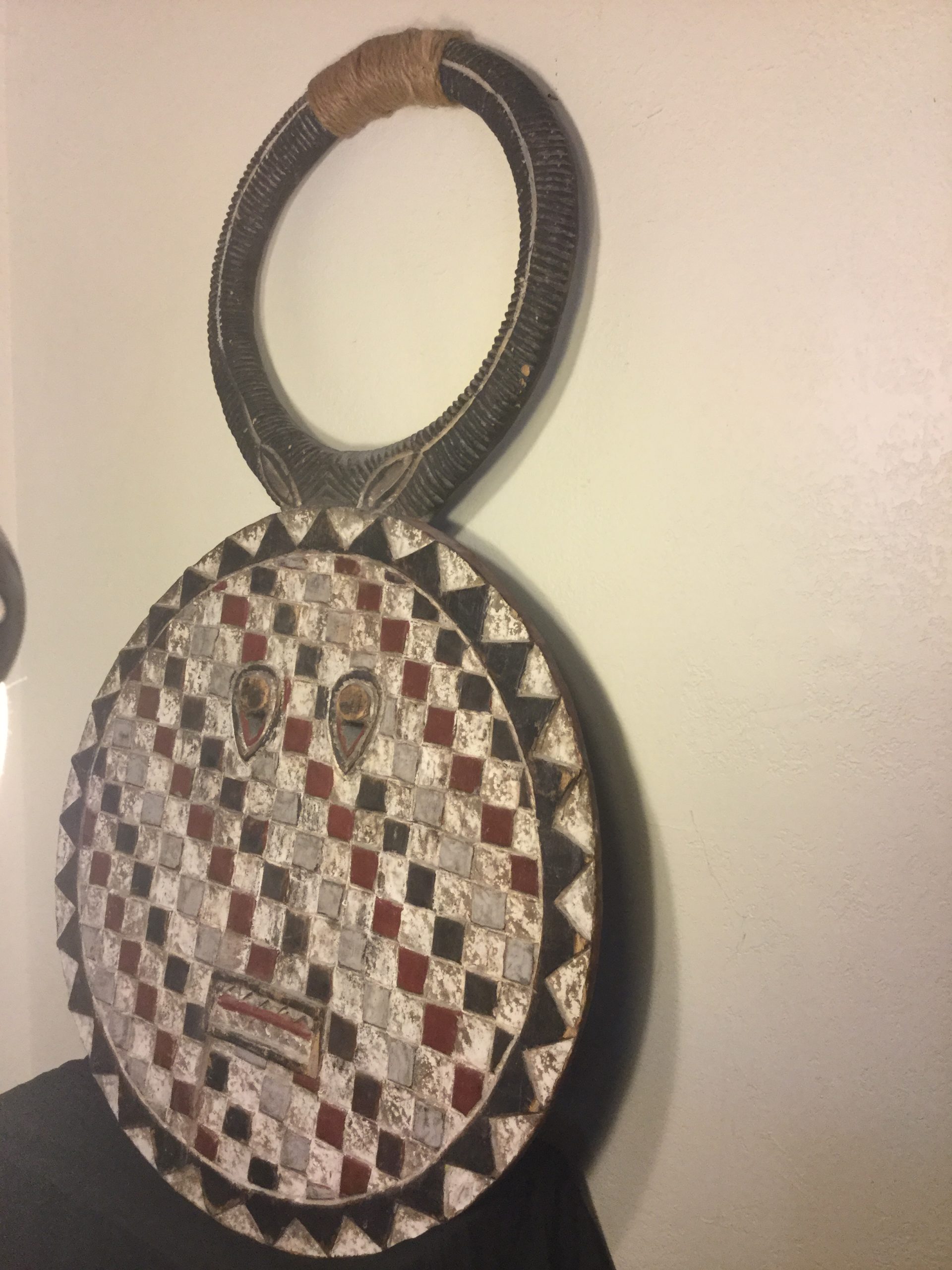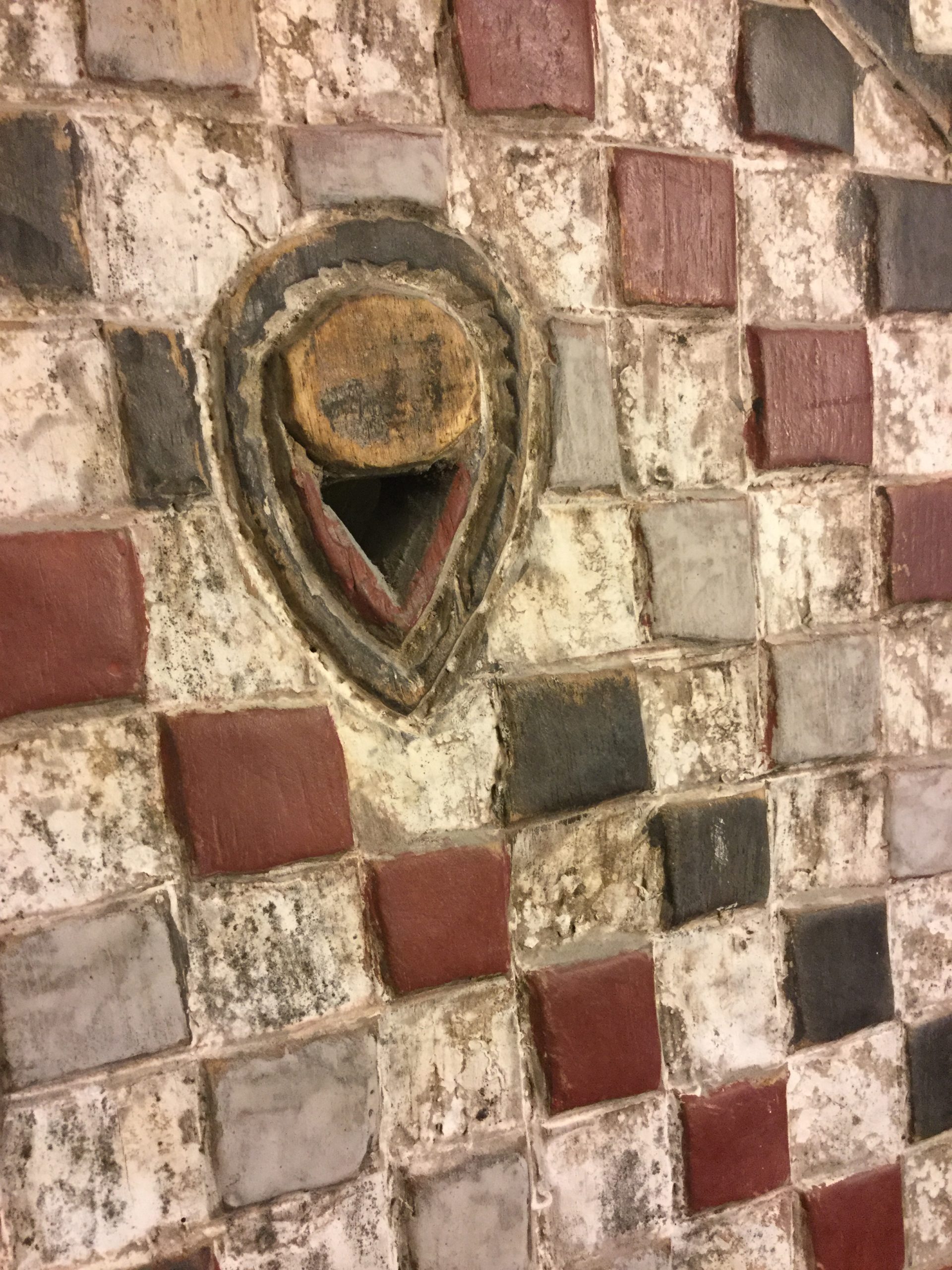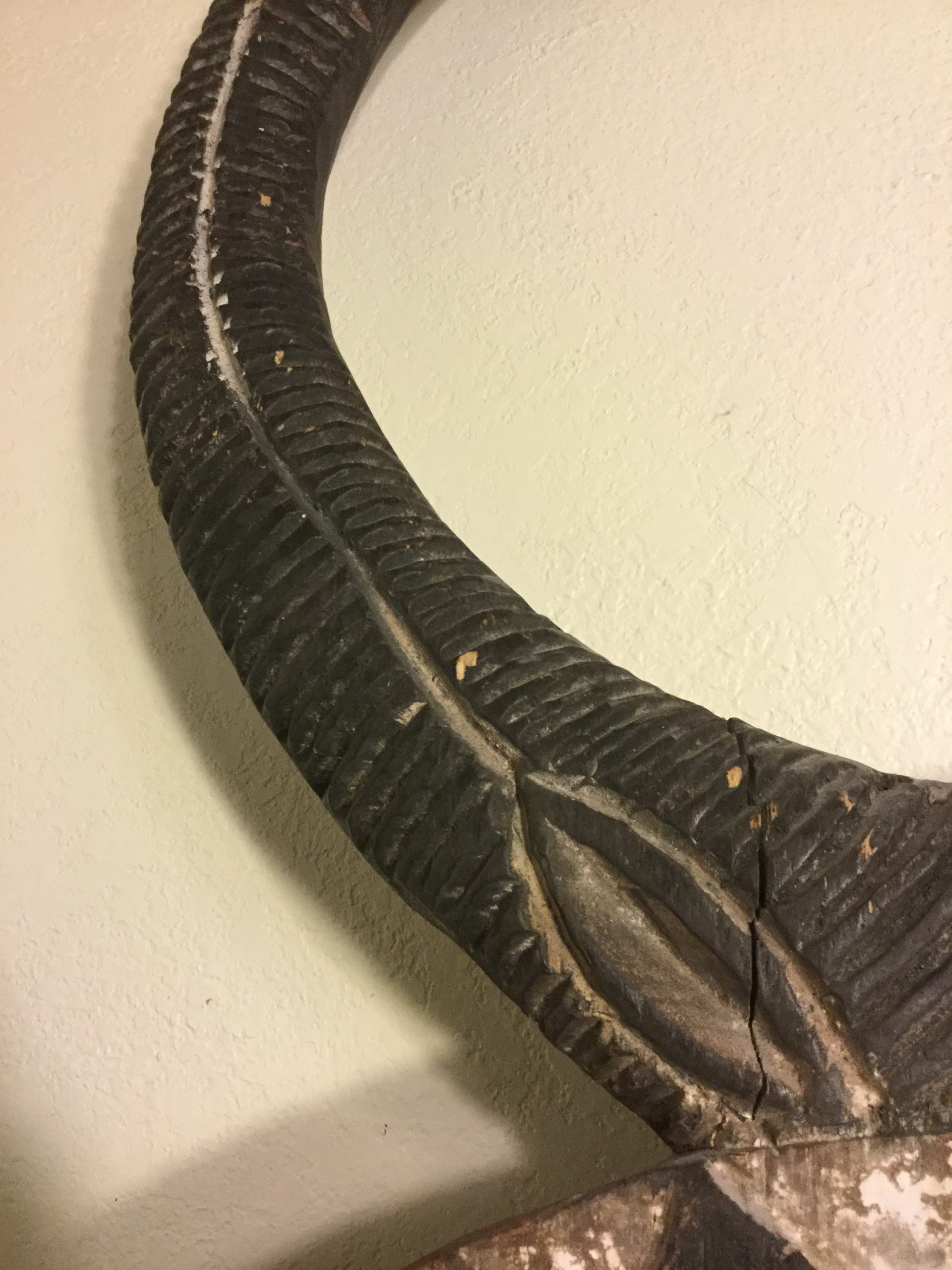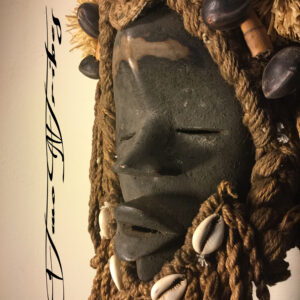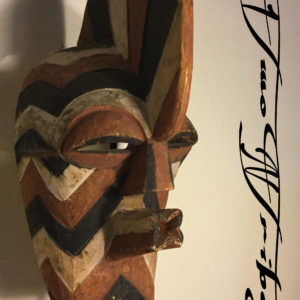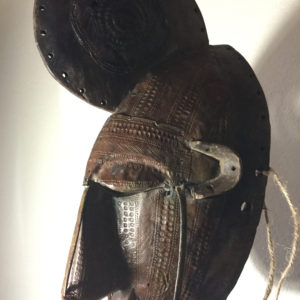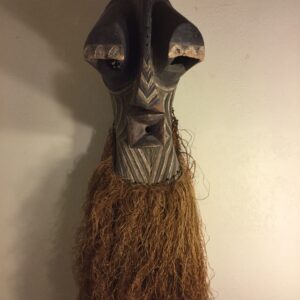Description
Baule Goli Mask In a special dance of rejoicing called Goli, symbolizing the social order, this mask, Kplekple, represents the junior male. It is among the most abstract of traditional African masks.
Goli is the day-long spectacle that normally involves the whole village and includes the appearance of four pairs of masks, music played on special instruments, and, ideally, the jojoyous consumption of a great deal of palm wine. Goli can be performed both as an entertainment and for the funeral of important men. The very characteristic, round-shaped “lunar” goli is surmounted by two horns. It was borrowed from the Wan for a celebration adopted by the Baule after 1900. Celebrating peace and joy, they would sing, dance, and drink palm wine. In the procession, the goli preceded the four groups of dancers, representing young adolescents. The goli would be used on the occasion of the new harvest, the visit of dignitaries, or at the funerals of notables.
The goli kplekple mask is one of several that appear in the Goli spirit dance. It represents a minor spirIt associated with the junior rank of male
dancers who perform before the more important masks appear. In keeping with its low status, this mask is made in a simple disk-shaped design and
lacks the more complex form and ornamentation that the Baule admire in their important masks.
